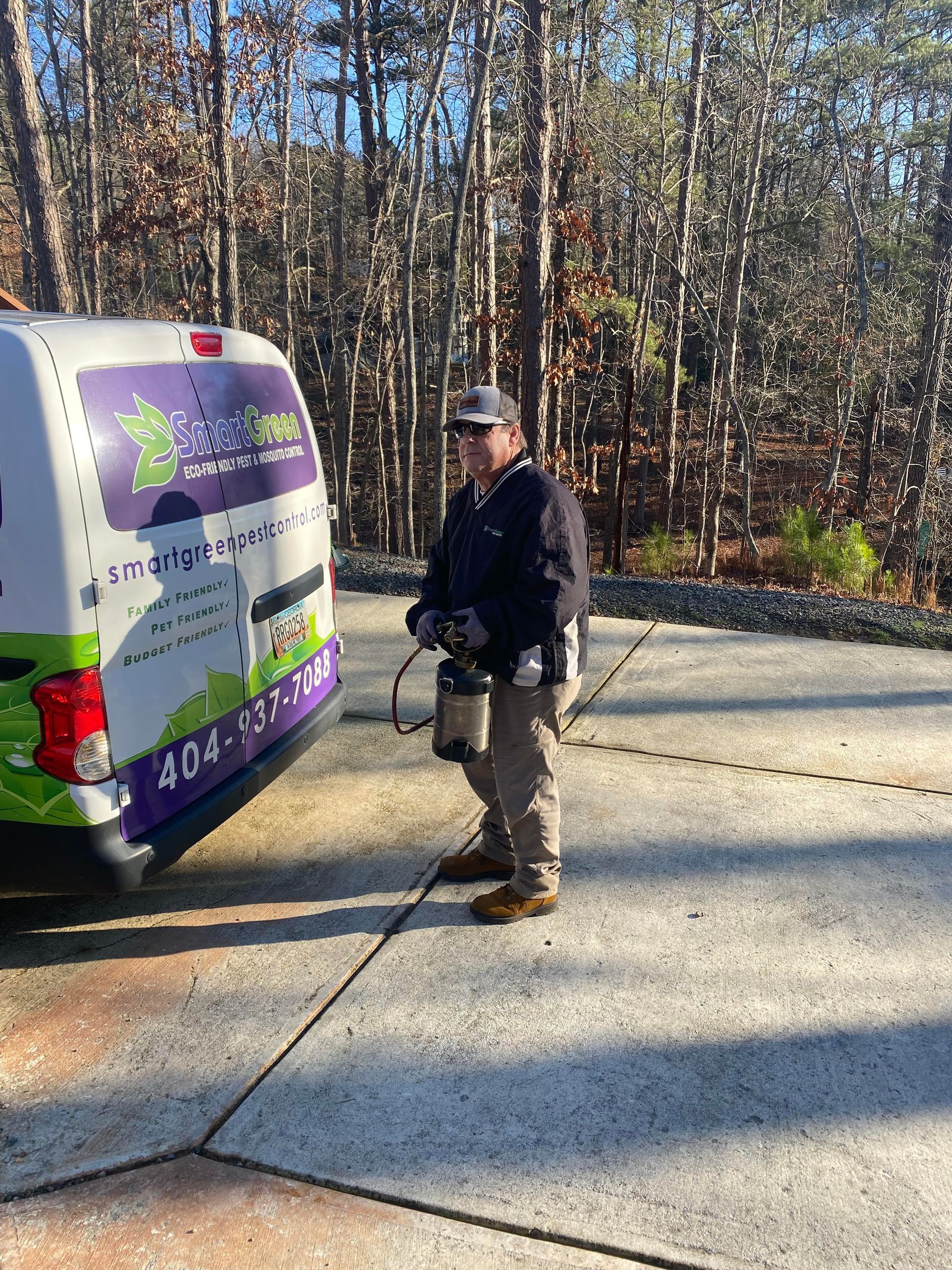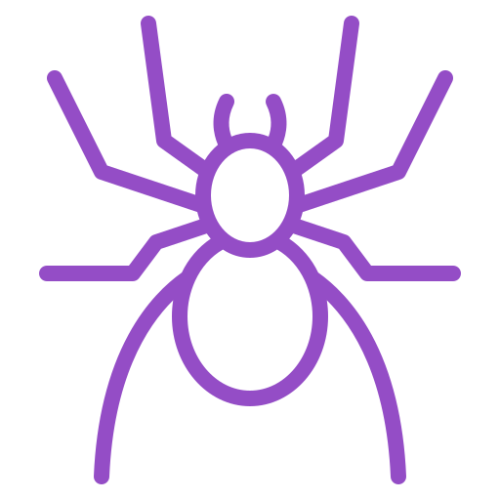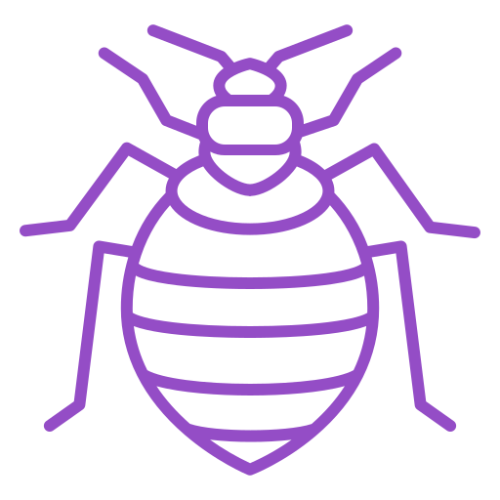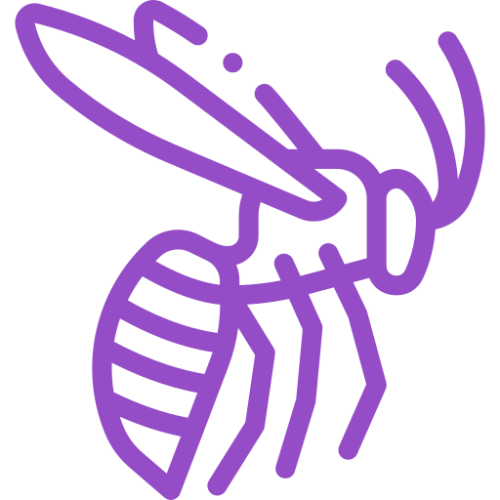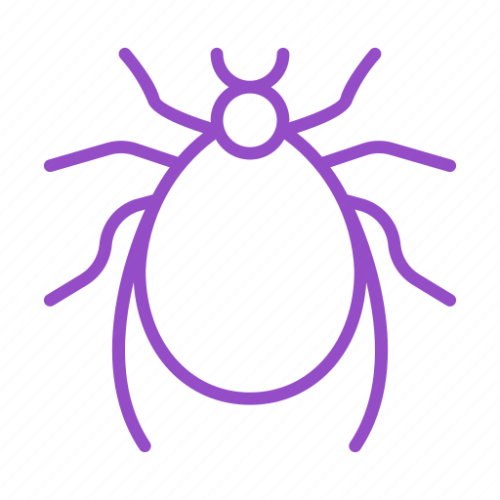Bed Bug Control and Exterminator Service
The Best Bed Bug Exterminator And Bed Bug Control Services Near Me!
Discover Effective Bed Bug Control Solutions with SmartGreen Pest and Mosquito Control in Woodstock, GA! Since 2014, we've been your trusted eco-friendly pest experts, committed to delivering top-notch customer service. Our dedicated team employs safe and environmentally conscious methods to eradicate bed bugs, ensuring a pest-free environment for your home or business. Don't let bed bugs disrupt your peace – rely on SmartGreen for personalized, eco-friendly bed bug control tailored to your needs. Experience the difference in pest control with our small business approach. Contact us today for a bed bug-free tomorrow!
We Provide Bed Bug Control and The Following Services:
SmartGreen Pest and Mosquito Control is dedicated to exterminating and preventing pest infestations on your property. Our services eradicate the most common and even uncommon pest types. You can count on us for:
Trust SmartGreen Pest and Mosquito Control exterminators in Woodstock, Kennesaw, GA and surrounding areas to get rid of all types of insects around your property. Call (404) 937-7088 today to request eco friendly pest control at your home or office.
Understanding Bed Bugs: Their Habits and Habitats
Bed bugs are small, oval-shaped insects that feed on the blood of humans and animals. Understanding their habits and habitats is crucial in effectively controlling and eliminating these pests.
Life Cycle of Bed Bugs
Bed bugs go through a series of developmental stages known as metamorphosis. They have three main life stages: eggs, nymphs, and adults. Understanding their life cycle can help in identifying and targeting different stages for effective control.
Bed Bug Behavior and Feeding Habits
Bed bugs are primarily nocturnal insects, preferring to feed on their hosts at night. They are attracted to the warmth and carbon dioxide emitted by humans, making beds and sleeping areas their primary habitats. Understanding their behavior and feeding habits can help in locating infestations and implementing control measures.
Common Bed Bug Habitats
Bed bugs are not limited to beds alone; they can infest various areas in your home. Understanding their preferred hiding spots and common habitats is essential for effective control. Common bed bug hiding places include mattresses, box springs, headboards, furniture cracks, electrical outlets, and even clothing.
Factors that Contribute to Bed Bug Infestations
Several factors contribute to the spread and persistence of bed bug infestations. These can include increased travel, shared living spaces, second-hand furniture, and lack of awareness. Understanding these factors can help in implementing preventive measures to avoid infestations.
Can Bed Bugs Transmit Diseases?
While bed bugs are known to be a nuisance, there is limited evidence to suggest that they transmit diseases. However, their bites can cause allergic reactions and secondary infections. Understanding the health risks associated with bed bugs can help in prioritizing control efforts and seeking appropriate medical attention if needed.
Common Misconceptions about Bed Bugs
There are many misconceptions surrounding bed bugs. Understanding the truth behind these misconceptions can help in dispelling myths and implementing effective control strategies. Some common misconceptions include bed bugs only infesting dirty environments, their ability to fly or jump, and reliance on pesticides as the sole solution for control.
By gaining a comprehensive understanding of bed bug habits and habitats, you can better equip yourself to tackle infestations head-on. In the next section, we will explore preventive measures that can help in keeping these unwelcome visitors at bay.
Preventive Measures Against Bed Bugs
Preventing bed bug infestations is crucial to avoid the hassle and discomfort they can cause. In this section, we will explore various preventive measures that you can implement to keep bed bugs at bay.
Maintain Cleanliness and Regular Housekeeping
Keeping a clean and clutter-free environment is one of the most effective ways to prevent bed bug infestations. Regularly vacuuming your home, especially in areas prone to infestations such as bedrooms, living rooms, and furniture, can help remove any potential hiding spots for bed bugs. Additionally, washing and drying bedding, linens, and clothing at high temperatures can eliminate any bed bugs or eggs that may be present.
Careful Inspection of Second-hand Furniture
Purchasing second-hand furniture can be a cost-effective option, but it also carries the risk of introducing bed bugs into your home. Before bringing any used furniture into your living space, thoroughly inspect it for signs of infestation. Pay close attention to seams, crevices, and cracks where bed bugs may hide. If possible, consider treating the furniture with heat or insecticides to eliminate any potential bed bugs before bringing it inside.
Use of Protective Covers on Mattresses and Pillows
Investing in high-quality, bed bug-proof mattress and pillow covers can act as a preventive barrier against bed bugs. These covers are designed to encase the entire mattress or pillow, preventing bed bugs from infesting or hiding in them. Be sure to choose covers that are specifically labeled as bed bug-proof and zipper-closed to ensure maximum protection.
Regular Inspection of Your Living Environment
Regularly inspecting your living environment for signs of bed bugs is essential in catching infestations early on. Check for any evidence of bed bugs, such as dark spots (fecal stains), shed skins, or live bugs in areas where they are commonly found, such as beds, furniture, and electrical outlets. Promptly addressing any signs of infestation can prevent the problem from escalating.
Be Cautious While Traveling
Bed bugs are excellent hitchhikers and can easily be transported from one location to another through luggage and personal belongings. When traveling, take precautions to minimize the risk of bringing bed bugs back with you. Inspect hotel rooms for signs of infestation before settling in, keep your luggage elevated and away from the bed, and launder your clothes and belongings upon returning home.
By implementing these preventive measures, you can significantly reduce the likelihood of a bed bug infestation in your home. However, if you suspect or identify an infestation, it is crucial to take immediate action. In the next section, we will explore how to identify bed bug infestations and understand the signs to look out for.
Identifying Bed Bug Infestation
Identifying a bed bug infestation is crucial for effective control and prompt intervention. In this section, we will discuss how to recognize the signs of a bed bug infestation and understand the health risks associated with their presence.
Signs of Bed Bug Presence
There are several indicators that can help you identify the presence of bed bugs in your home. These signs include:
- Visible Bed Bugs: Adult bed bugs are about the size of an apple seed and can be seen with the naked eye. Look for live bugs crawling on your mattress, furniture, or other infested areas.
- Dark Stains or Fecal Spots: Bed bugs leave behind dark stains or fecal spots on sheets, mattresses, and other surfaces. These spots are a result of their excrement and can be found in clusters or lines.
- Shed Skins: As bed bugs grow and mature, they shed their exoskeletons. Look for translucent, shell-like skins in areas where bed bugs are likely to hide.
- Egg Casings: Bed bug eggs are tiny and white, about the size of a pinhead. Look for these small, oval-shaped casings in crevices, cracks, and other hidden areas.
- Musty Odor: In severe infestations, bed bugs can release a musty odor. If you notice an unpleasant, sweet, or musty smell in your home, it could be a sign of a significant infestation.
Bed Bug Bites and Other Health Risks
Bed bug bites are often the first indication of an infestation. However, it is important to note that not everyone reacts to bed bug bites in the same way. Some individuals may not experience any visible reaction, while others may develop itchy, red welts or localized swelling. Bed bug bites are commonly found in groups or clusters, often in areas of the body that are exposed during sleep, such as the face, neck, arms, and legs.
Aside from physical discomfort, bed bugs do not transmit known diseases to humans. However, their presence can lead to secondary issues such as anxiety, insomnia, and stress due to sleep disturbances and the psychological impact of an infestation. It is important to address a bed bug infestation promptly to prevent these health risks from escalating.
Professional Bed Bug Inspection
If you suspect a bed bug infestation but are unsure, it is advisable to seek the assistance of a professional pest control company. Professional bed bug inspections involve a thorough examination of your home, using specialized tools and trained technicians. They can accurately identify the presence of bed bugs, determine the severity of the infestation, and provide recommendations for effective treatment.
By familiarizing yourself with the signs of bed bug presence and understanding the associated health risks, you can take appropriate action if you suspect an infestation. In the next section, we will explore various treatment methods available for bed bug control.
Treatment Methods for Bed Bug Control
When it comes to controlling bed bug infestations, there are various treatment methods available. In this section, we will explore different approaches for bed bug control, including do-it-yourself (DIY) methods and professional pest control services.
DIY Bed Bug Treatments
If you have identified a mild or early-stage infestation, you may choose to attempt DIY bed bug treatments. Here are some commonly used DIY methods:
- Thorough Cleaning and Vacuuming: Start by thoroughly cleaning and decluttering the infested areas. Vacuum carpets, mattresses, furniture, and other surfaces to remove any bed bugs, eggs, or debris. Be sure to discard the vacuum bag in a sealed plastic bag to prevent reinfestation.
- Hot Water Laundering and Drying: Wash infested bedding, clothing, and linens in hot water and dry them on high heat. The heat will kill any bed bugs or eggs present.
- Steam Treatment: Using a steam cleaner with high temperatures can effectively kill bed bugs and their eggs. Steam clean mattresses, furniture, baseboards, and other infested areas, ensuring that the steam reaches the cracks and crevices where bed bugs hide.
- Encasement of Mattresses and Furniture: Encase mattresses, box springs, and pillows in bed bug-proof covers to trap any existing bed bugs inside and prevent new infestations.
- Natural Remedies and Insecticides: Some natural remedies, such as diatomaceous earth and essential oils, are believed to have insecticidal properties. However, their effectiveness in eradicating bed bugs is still debated. If using insecticides, carefully follow the instructions on the product label and consider seeking professional advice.
While DIY methods can be effective for small infestations, they may not completely eradicate larger or more severe infestations. In such cases, it is advisable to seek professional assistance.
Professional Pest Control Services
Professional pest control services offer expertise and specialized treatments to effectively eliminate bed bug infestations. Here are some common professional treatment methods:
- Chemical Treatments: Pest control professionals may use insecticides specifically formulated for bed bug control. These treatments may involve spraying or dusting infested areas, cracks, and crevices, as well as treating furniture and mattresses. It is important to hire licensed professionals to ensure the safe and effective use of chemicals.
- Heat Treatments: Heat treatments involve raising the temperature in the infested area to levels that are lethal to bed bugs. Professionals use specialized equipment to heat the space, ensuring that all bed bugs and eggs are eliminated. Heat treatments can be effective in eradicating bed bugs in a single treatment, but they require proper preparation and expertise.
- Freezing Treatments: Cryonite or freezing treatments involve using carbon dioxide to freeze and kill bed bugs. This method can be effective in treating specific items or localized infestations.
- Fumigation: In severe infestations, fumigation may be recommended. This method involves sealing the infested area and introducing a gas-based insecticide that penetrates cracks and crevices, eliminating bed bugs. Fumigation is a highly specialized treatment and should only be performed by licensed professionals.
Choosing the appropriate treatment method depends on the severity of the infestation, the specific circumstances, and personal preferences. Consulting with a professional pest control company can help determine the most effective approach for your situation.
In the next section, we will explore post-treatment measures to prevent bed bug recurrence and maintain a bed bug-free environment.
Post-Treatment Measures to Prevent Recurrence
After successfully treating a bed bug infestation, it is essential to implement post-treatment measures to prevent a recurrence. In this section, we will discuss several steps you can take to maintain a bed bug-free environment.
1. Regular Inspection and Cleaning
Continued vigilance is key to preventing a re-infestation. Regularly inspect your living areas, especially beds, furniture, and other potential hiding spots, for any signs of bed bugs. Promptly address any issues that arise to prevent a small infestation from growing into a larger problem. Additionally, maintain a regular cleaning routine, including vacuuming and decluttering, to eliminate potential hiding spots for bed bugs.
2. Monitoring for Bed Bug Activity
Implementing monitoring devices can help detect any bed bug activity early on. Bed bug monitors, such as interceptors or traps, can be placed under bed legs or in other strategic locations. These devices can capture bed bugs and provide an indication of their presence, allowing you to take immediate action if necessary.
3. Maintaining a Bed Bug-Free Environment
To maintain a bed bug-free environment, consider the following measures:
- Avoid Second-hand Furniture: Be cautious when acquiring second-hand furniture, especially without proper inspection. If you do bring in used furniture, thoroughly inspect it for signs of bed bugs before introducing it into your home.
- Be Cautious While Traveling: When staying in hotels or other accommodations, inspect the room for signs of bed bugs before unpacking. Keep your luggage elevated and away from the bed, and launder your clothes and belongings upon returning home.
- Educate Yourself and Others: Stay informed about bed bug prevention and control strategies. Share this information with family members, friends, and neighbors to raise awareness and prevent the spread of infestations.
Remember, even with thorough preventive measures, there is always a risk of a bed bug infestation. If you suspect a re-infestation or require professional assistance, do not hesitate to contact a reputable pest control company.
By implementing these post-treatment measures, you can significantly reduce the likelihood of a bed bug recurrence and maintain a bed bug-free living environment.
Congratulations! You have now reached the end of our ultimate guide to bed bug control. We hope that this comprehensive resource has provided you with valuable insights and strategies to effectively deal with bed bug infestations. Remember, early detection and prompt action are crucial in preventing the spread of bed bugs and minimizing the impact on your daily life.
Ready To Get Rid Of Bed Bugs?
Bottom line- A reduced amount of less toxic materials in and around the home, combined with “IPM” strategies, results in less exposure for you, your loved ones and pets. In addition, we guarantee against all of the most common pests here in Georgia: ants, roaches, spiders, etc.
*SmartGreen offers additional services at discounted rates for pest control customers, these services include: Mosquito Control, Termite Control, Flea and Tick Control, Pantry Pests Programs and Yard Applications.*

